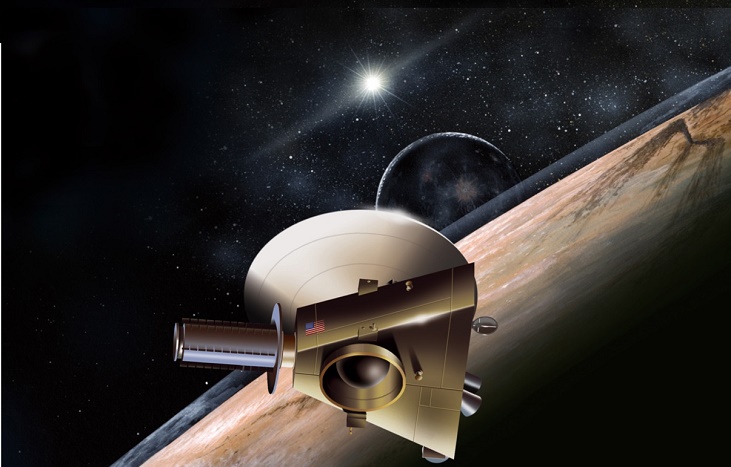After a journey of almost 3 billion miles, taking close to a decade, NASA’s New Horizons space probe is finally reaching its target, the dwarf planet Pluto. The probe’s mission is to study the planet and its other icy neighbours in the Kuiper belt.
Given the large distance from Earth and the small size of Pluto, it has been difficult to study it from earth. There is a lot about Pluto which is either unknown or astronomers aren’t sure about. This mission will finally lift the veil of mystery that has covered Pluto since its discovery in 1930. Many scientists are expecting surprises from the information that will come out.
Launched on the 19th of January 2006, the New Horizons spacecraft will be at its closest approach to Pluto around 4:49 P.M, PST today. It will be approximately 12,500 km away from the surface of Pluto. This is the first time a man-made object will come this close.
However, the first pictures of Pluto are not expected to be sent back to earth until the next day. Over the days that follow the fly-by, NASA will release the best quality photos yet of Pluto and its moons, including the largest one Charon. The probe is armed with a wide array of instruments to study the surface and atmosphere of the dwarf planet and a lot of data is going to be generated. All of the scientific data from the mission will not be received back until late 2016.
The exploration of Pluto was previously considered during the planning of the Voyager 1 mission (currently the farthest and fastest man-made object). However at that time, it was considered more important to study Saturn’s moon Titan among other celestial bodies, making a fly-by of Pluto impossible. A number of propositions regarding a mission to Pluto were planned and cancelled by NASA before the New Horizons was finally agreed on.
So while waiting a little more for the pictures of Pluto that are as clear as those of earth from its satellites, you can join in on the fun with NASA’s Eyes on the Solar System app. The trajectory of the New Horizon spacecraft has been loaded into the app so you can visualize a simulation of the fly-by. Pluto’s images are the best available so far and as soon as the newer ones are received by NASA, they will be integrated into the app.
A live stream of the event’s coverage will also be available on NASA TV. You can also check out details of live communication between NASA and its deep space probes via the DSN Now webpage.
Links:
- Eyes on the Solar System – Eyes on Pluto
- NASA TV
- NASA DSN-Now












